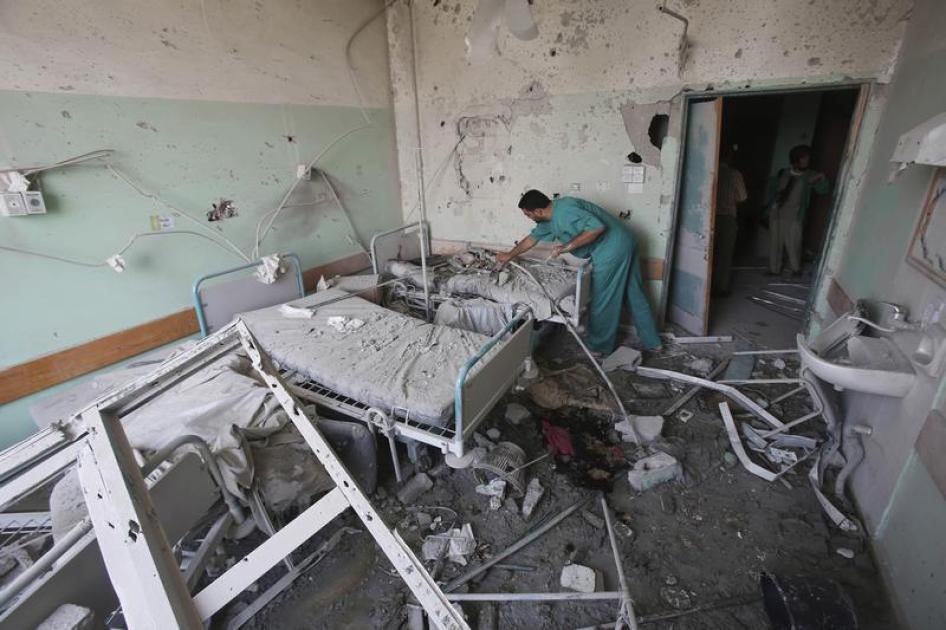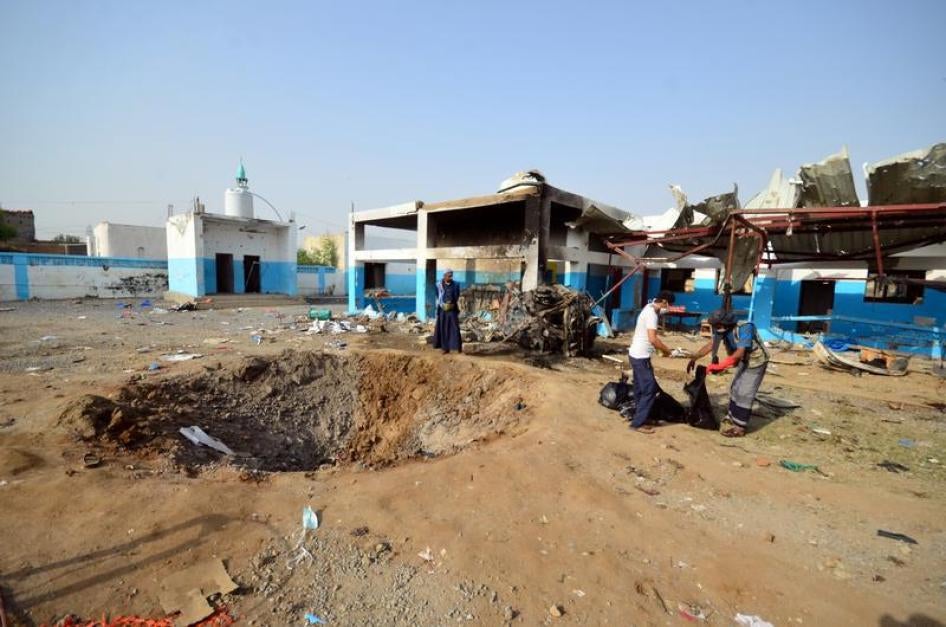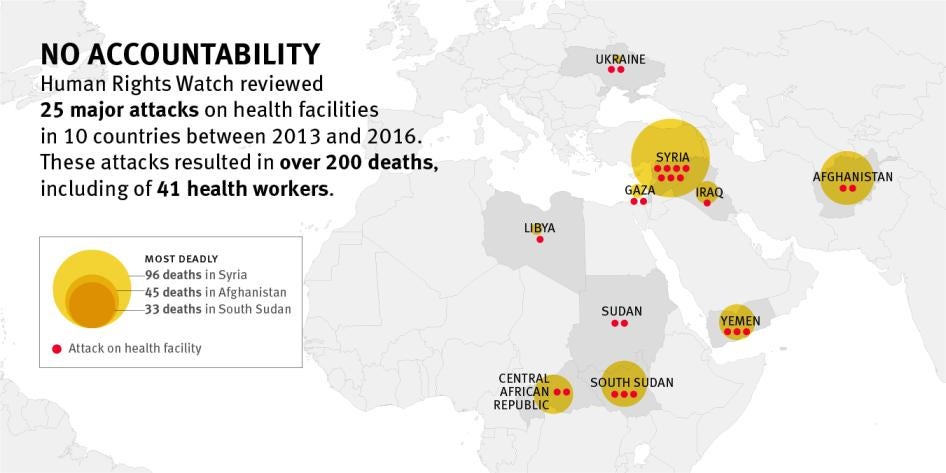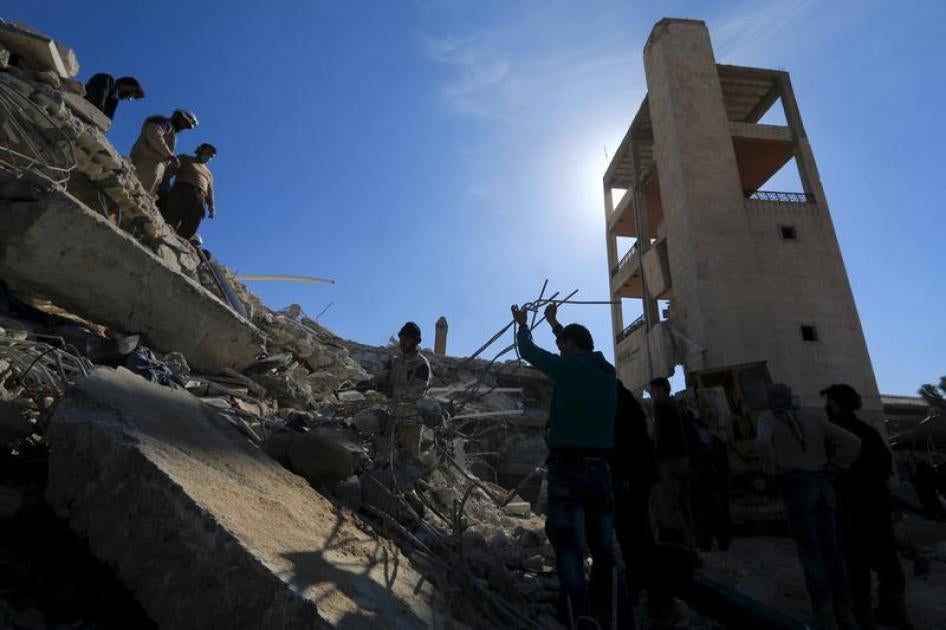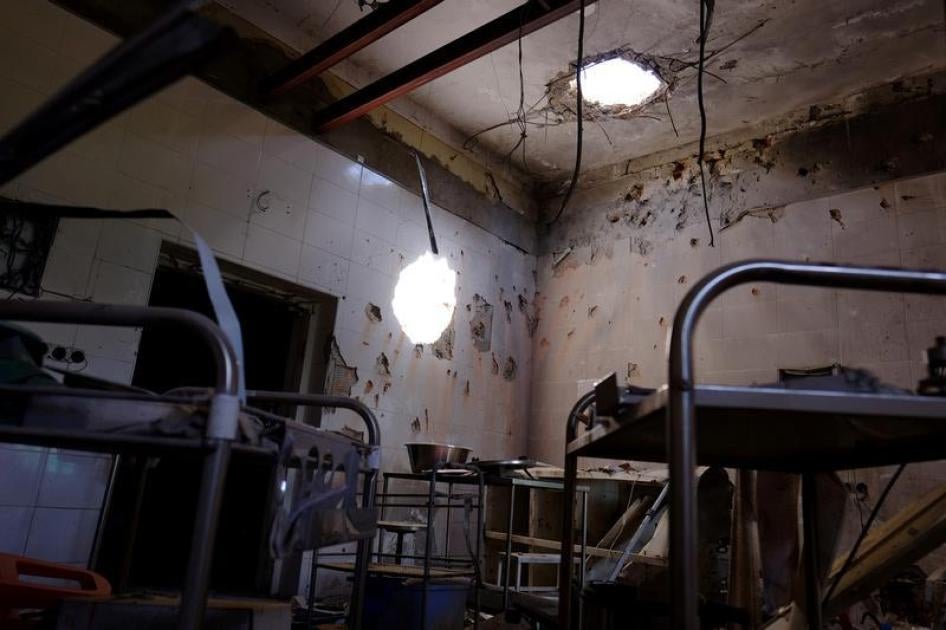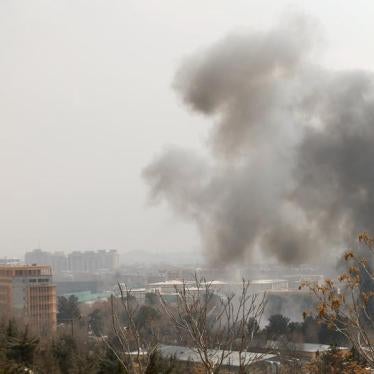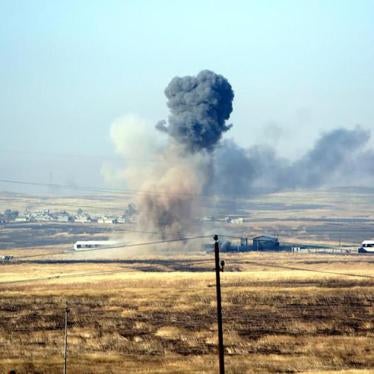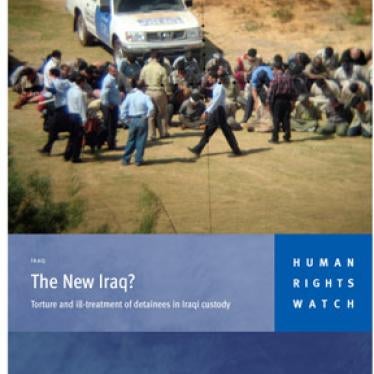(New York) – Deadly attacks on hospitals and medical workers in conflicts around the world remain uninvestigated and unpunished a year after the United Nations Security Council called for greater action, Human Rights Watch said today.
On May 25, 2017, UN Secretary-General Antonio Guterres is scheduled to brief the Security Council on the implementation of Resolution 2286, which condemned wartime attacks on health facilities and urged governments to act against those responsible. Guterres should commit to alerting the Security Council of all future attacks on healthcare facilities on an ongoing rather than annual basis.
“Attacks on hospitals challenge the very foundation of the laws of war, and are unlikely to stop as long as those responsible for the attacks can get away with them,” said Bruno Stagno-Ugarte, deputy executive director for advocacy at Human Rights Watch. “Attacks on hospitals are especially insidious, because when you destroy a hospital and kill its health workers, you’re also risking the lives of those who will need their care in the future.”
A report by the Safeguarding Health in Conflict Coalition, a coalition of international nongovernmental organizations, published in May, found that attacks on health facilities and medical workers continued to occur at an alarming rate in 2016.
International humanitarian law, also known as the laws of war, prohibits attacks on health facilities and medical workers. To assess accountability measures undertaken for such attacks, Human Rights Watch reviewed 25 major attacks on health facilities between 2013 and 2016 in 10 countries. For 20 of the incidents, no publicly available information indicates that investigations took place. In many cases, authorities did not respond to requests for information about the status of investigations. Investigations into the remaining five were seriously flawed.
No one appears to have faced criminal charges for their role in any of these attacks, at least 16 of which may have constituted war crimes. The attacks involved military forces or armed groups from Afghanistan, Central African Republic, Iraq, Israel, Libya, Russia, Saudi Arabia, South Sudan, Sudan, Syria, Ukraine, and the United States.
The UN system, under its Human Rights Up Front initiative, should collect information on all health facility attacks, press governments to fully investigate them, and recommend avenues for accountability.
The 25 incidents reviewed resulted in the deaths of more than 200 people, including 41 health workers, and injured 180. The attacks also had significant impact on health services as 16 hospitals were partially or completely closed, at least temporarily.
In the 20 incidents without apparent investigations, governments ignored credible allegations about the attacks, publicly denied responsibility, or blamed other parties without conducting an inquiry. In several cases, authorities claimed to have initiated investigations, but have either failed to present any findings or have not conducted any investigation whatsoever.
In one example, neither Iraqi nor US-led coalition forces acknowledged an October 2016 airstrike that hit the main health facility in a village near Mosul, Iraq, destroying half the clinic and killing eight people, though the forces carried out airstrikes near Mosul on that day.
In another, in February 2016, airstrikes hit the two largest hospitals serving the city of Ma’aret al-Nu’man, Syria, destroying one of the hospitals and killing 20 people, including 11 health workers. But Russia and Syria, the parties most likely responsible for both attacks, immediately denied responsibility and claimed that US-led coalition forces carried out the strikes. US authorities denied this allegation. None of the parties investigated the incident.
Five of the 25 incidents Human Rights Watch reviewed appear to have been investigated in some form. But Human Rights Watch found that investigating authorities either left critical questions about the circumstances unanswered or failed to draw appropriate conclusions from their findings.
For example, a Saudi Arabia-led coalition task force investigating potential violations by their forces in Yemen concluded that an August 2016 attack on a hospital in the city of Abs, Hajjah governorate, was an “error” but failed to determine whether the attack violated the laws of war.
Following the October 2015 attack by the US military on a trauma center in Kunduz, Afghanistan, that killed 42 people and injured dozens of others, a US Defense Department investigation concluded that the attack violated the laws of war, but was not a war crime because the hospital was not targeted intentionally. However, the US investigation’s findings indicated criminal recklessness by US forces, which could amount to a war crime.
The Defense Department disciplined 12 military personnel, including by demoting an officer, publicly apologized for the attack, and made changes to policies to prevent similar incidents in the future.
Some of the incidents were in war-torn countries without functioning justice systems. In countries such as Central Africa Republic, Libya, and South Sudan, almost no domestic investigations have been conducted into any alleged laws-of-war violations.
In some cases, UN-affiliated commissions have investigated incidents in which health facilities have been attacked, but at most they can recommend cases for criminal prosecution.
In many instances, the only possible option for accountability rests with international justice mechanisms, such as the International Criminal Court, or under universal jurisdiction laws in other countries. The ICC has taken up two cases of attacks on health facilities.
“The UN Security Council needs to do much more to deter attacks on hospitals,” Stagno-Ugarte said. “The council should react promptly to every serious attack on a health facility, including by demanding credible investigations and accountability.”
Selected Incidents
The eight incidents below illustrate failures of accountability for attacks on hospitals and health workers. The selected cases reflect the variety of responses to these incidents, including denial of responsibility or simple disregard, stalled and flawed investigations, and situations without functioning justice systems.
For this research, Human Rights Watch collected information on 25 incidents that occurred across all major conflicts in which attacks on health facilities were reported between 2013 and 2016. Information on attacks and government responses to them were gathered through interviews with witnesses, health workers, and representatives from humanitarian organizations. This was supplemented by open-source searches, reviews of relevant UN and other publications, analysis of photographs and videos posted on the internet, and analysis of satellite imagery where relevant. Where possible, we spoke to government officials and sent letters with our findings to appropriate investigative bodies.
Airstrike on Hammam al-Alil Health Clinic in Iraq, October 18, 2016
On October 18, 2016, an airstrike destroyed half a clinic in the ISIS-controlled town of Hammam al-Alil, Iraq, 30 kilometers south of the embattled city of Mosul. Eight people were killed, including a 72-year-old man who had taken his two grandsons to the clinic for a polio vaccination. Health workers reported that about 50 people were at the clinic, the main healthcare facility in the area, with a population of 70,000. The strike destroyed the radiation department, vaccination division, and human resources and administrative departments.
Both the US-led coalition and the Iraqi military were conducting airstrikes near Mosul that day in the fighting against ISIS. Human Rights Watch was unable to identify the source of the attack.
A health worker told Human Rights Watch that after ISIS took control of the town in July 2014, fighters took over an office in one of the treatment wards. Health workers said that three ISIS fighters, including the transportation minister, were killed in the attack.
ISIS military use of the hospital was in violation of international humanitarian law. But while the presence of ISIS fighters in the hospital made it a military objective, and thus a possible legitimate target of attack, international humanitarian law requires that attacks on medical facilities only be carried out after a warning has been given, setting a reasonable time limit to heed the warning, and after that time limit has expired. Health workers said that there was no warning.
Moreover, attacks on military objectives must be proportionate: the expected harm to civilians and civilian property cannot be greater than the anticipated military gain from the attack. This incident raises serious questions about whether it met the proportionality requirement. Yet, neither the Iraqi government nor US-led coalition forces have provided information on the intended target of the attack or made a commitment to investigate it as a possible violation of international humanitarian law.
Airstrike on Abs Hospital in Abs, Hajjah, Yemen, August 15, 2016
On August 15, 2016, Saudi-led coalition forces carried out an airstrike that hit a vehicle parked between the emergency and triage areas of Abs Hospital, a facility supported by MSF. MSF reported that the attack severely damaged the hospital’s emergency department and left 19 dead, including one of the hospital’s staff members, and 24 wounded, including 11 staff members.
According to MSF, the hospital had been the only one functioning in the western part of Hajjah governorate, and had been a lifeline to the 300,000 internally displaced people in the region. In the year before the attack, the facility’s 14-bed emergency room had handled more than 12,000 outpatient visits, and hospital staff had helped 1,631 women deliver babies.
Following the attack, the facility was out of service for more than a week. Ten days later, the emergency room, maternity ward, and lab reopened, though attendance remained low.
After the attack generated headlines, the Joint Incidents Assessment Team (JIAT), a body set up by the coalition to investigate potential violations of international humanitarian law committed by their forces in Yemen, opened an investigation into the incident. On December 6, Saudi state media reported that JIAT had concluded that the coalition had targeted a vehicle it considered to be a “legitimate military target” and that the damage to the hospital building was unintentional.
Key findings of the JIAT investigation, as reported by the media, directly contradict MSF’s account and visual documentation of the attack, and raise concerns about the investigation’s thoroughness. For example:
- JIAT claimed that the building “had no signs of being a hospital before the bombing,” whereas MSF said that it had repeatedly provided the coalition with GPS coordinates of the facility, including on August 10, five days before the incident. MSF’s internal investigation’s report also included photos that show the MSF logo clearly painted on two roofs, which also appeared in videos posted by local media soon after the attack that Human Rights Watch reviewed; and
- JIAT concluded that seven people were killed in the attack; MSF put the number at 19 and video footage and photos of the site suggest a higher death toll than seven.
Moreover, the JIAT investigation did not address whether the attack violated international humanitarian law and did not recommend a criminal investigation. It did recommend that the coalition apologize for the error and compensate those affected, and that the incident should be “further investigated” without clarifying by whom.
To Human Rights Watch’s knowledge, the Saudi government has neither provided compensation for those harmed nor offered a public apology.
Raid on Clinic in Tangi Saidan, Wardak Province, Afghanistan, February 17-18, 2016
On the night of February 17 to 18, 2016, soldiers reported to be Afghan Security Forces supported by international troops, raided a medical clinic in Tangi Saidan, Wardak province, west of Kabul. The soldiers reportedly handcuffed staff members and made them lie down on the floor, then searched the 10-bed facility for Taliban fighters.
The soldiers took two patients, one of whom was under 18 years old, and a 15-year-old boy from the clinic and shot them dead outside the clinic’s grounds. The Swedish Committee for Afghanistan, which supports the clinic, reported that local staff had observed at least two soldiers wearing foreign uniforms and speaking a language that sounded like English.
On February 25, NATO told IRIN News that its Joint Casualty Assessment Team had begun “a preliminary probe to determine if the allegations concerning civilian victims are credible.” Since then, NATO has made various statements that its investigation had found “absolutely no evidence to support that allegation,” without specifying which allegation it was referring to, or whether international military forces were present at the raid and claiming not to have access to health workers who witnessed the incident. The Swedish Committee for Afghanistan told IRIN that it had “been in contact with NATO and agreed upon a procedure to take testimony from SCA staff.” NATO has not released any findings or conclusions from its investigation.
Reports published in the week after the raid indicated that the Afghan government opened an investigation into the incident concerning the conduct of its forces, but no findings have been released publicly.
Airstrikes on al-Hamadiya Hospital and the National Hospital in Ma’aret al-Nu’man in Idlib, Syria, February 15, 2016
On February 15, 2016, starting at about 9 a.m., at least four separate airstrikes hit two of the largest hospitals serving the city of Ma’aret al-Nu’man within a period of three hours. The northern city is in an area of Idlib governorate, controlled by Syrian opposition groups.
The humanitarian medical organization Medecins Sans Frontieres (Doctors without Borders, or MSF) reported that two strikes in quick succession hit al-Hamadiya Hospital, destroying the four-story building, killing at least 9 medical personnel and 16 patients and caretakers, and injuring another 11 people. Following the attack, emergency medical personnel began transporting the wounded to the National Hospital, six kilometers north of al-Hamadiya Hospital.
At about 11 a.m., the Syrian American Medical Society (SAMS) and the Idlib Health Directorate reported that the Ma’aret al Nu’man National Hospital had been struck by two munitions. SAMS, which supports the facility, said that the first munition hit about three meters from the hospital. Ten minutes later, another munition fell close to the hospital’s entrance, where the wounded from the al-Hamadiya hospital were being shuttled in. The attack killed at least four people, including two nurses in training, according to SAMS. Hospital administrators told Human Rights Watch that the facility did not receive advance warning of the attacks.
Both facilities were attacked from the air, making it likely that Syrian or Russian air forces were responsible. A detailed analysis by Forensic Architecture suggests that the attack on the first hospital was carried out by the Russian Air Force, and the second by the Syrians. The Russian and Syrian governments immediately denied responsibility. On February 16, President Vladimir Putin’s press secretary, Dmitry Peskov, rejected claims made by MSF, which supported al-Hamadiya Hospital, that either the Russian or Syrian air forces were responsible for the attack on the hospital in Ma’aret al-Nu’man, calling the allegation “unacceptable.”
In a statement to the UN press corps, Bashar Jaafari, the Syrian ambassador to the UN, denied Russian responsibility for the attack and claimed that the Syrian government possessed information that it was the US-led alliance that struck a hospital in Syria on February 15, 2016. The US Air Force spokesperson for Operation Inherent Resolve denied these allegations in a tweet.
The Russian government has not responded to a February 2017 Human Rights Watch letter inquiring whether it had investigated these incidents.
Airstrikes on Trauma Center in Kunduz, Afghanistan, October 3, 2015
On October 3, 2015, the US Air Force carried out an aerial attack on an MSF hospital in Kunduz, Afghanistan. The attack killed 42 people, including 14 MSF staff members, and injured dozens more. MSF’s internal review of the case found that much of the hospital’s vital facilities were destroyed, including the intensive care unit, operating theaters, and emergency room.
The hospital was the province’s most advanced medical facility and was the only one of its kind in northeastern Afghanistan. Before it opened in 2011, severely injured patients had to travel to Kabul or Pakistan for treatment. Since 2011, it had conducted more than 15,000 surgeries and treated patients during more than 68,000 emergency room visits.
The day of the incident, the US government confirmed that its military had carried out the attack and promised to investigate. In November 2015, the US Defense Department released a summary of its investigation, which concluded that the attack was the result of a combination of human errors, equipment failure, and miscommunication. A redacted investigation report was published in April 2016, and found that US forces committed several serious violations, including initiating an attack that was unlawfully disproportionate to the expected military gain, as well as failing to distinguish between combatants and civilians. The report ultimately concluded that the attack did not constitute a war crime because forces had not intentionally targeted the medical facility.
However, the report shows overwhelming evidence of recklessness on the part of US forces, which could amount to the necessary criminal intent for a war crime. For instance, the ground commander had authorized the strikes on the basis of a single source, despite being “9 km from the [facility]” and not having a visual “line of sight.” None of the commanders used “resources available … that would have confirmed” that the attacked location was a medical facility and not the intended target, a grouping of Taliban attackers. Moreover, commanders allowed the air crew to continue shooting at the hospital for an additional eight minutes, even after MSF alerted commanders that they were attacking a hospital.
The US government apologized for the attack and made significant changes to military operating procedures to prevent a similar attack in the future. The investigation identified sixteen servicemembers who were involved in the attack, and twelve were given administrative punishments, according to the Defense Department. One officer was demoted and removed from Afghanistan, the others either received letters of reprimand, were sent to counseling, or went through mandatory retraining. The US government also offered compensation to the families of the victims and approved funds to reconstruct the MSF facility.
None of the servicemembers involved faced criminal charges.
Furthermore, the Afghan government’s investigation into the role of Afghan troops in the incident was never completed. While Afghan forces played a crucial role in supplying the US airship first with GPS coordinates of the original target and later with a physical description of the hospital’s compound, the Afghan government has not reported on whether troops knowingly provided their US allies with a description of the hospital, rather than the intended target. Moreover, Afghan officials have repeatedly claimed the hospital compound was being used by the Taliban for military purposes, stating the day after the attack, for example, that the Taliban had taken control of the compound prior to the airstrike. MSF rejected those claims.
On October 10, 2015, Afghan President Ashraf Ghani said he had appointed investigators to look into the Taliban’s capture of Kunduz and the US airstrike on the hospital. However, the final report did not mention the airstrike.
Attack on Shuhada’ al-Aqsa Hospital in Gaza, July 24, 2014
On July 21, 2014, at about 2:40 p.m., Israeli tanks repeatedly fired on the Shuhada’ al-Aqsa Hospital in Gaza while patients and staff were inside. The attacks reportedly resulted in three or four civilian deaths and injured about 40 people, including medical staff and patients. The surgical and intensive care units, as well as two ambulances, were damaged, Palestinian human rights organization al-Haq said.
In June 2016, the Israeli Military Advocate General responded to complaints submitted by multiple Israeli and Palestinian human rights groups, saying that the incident was still under review.
An investigation by the UN human rights office found the facility was not given advance warning of the attack.
Established in 2001, Shuhada’ al-Aqsa Hospital was the only major hospital in the central district of the Gaza Strip, which had a population of about 260,000. In 2011, the most recent year for which data are available, the hospital’s emergency department had more than 90,000 patient visits, and its surgical department admitted 4,521 patients.
An Israel Defense Forces spokesperson told the media that initial investigations into the incident found “that a cache of antitank missiles was stored in the immediate vicinity of the Shuhada al-Aqsa Hospital.” However, Israel has not published findings of any additional investigation.
The Military Advocate General has not responded to a February 2017 Human Rights Watch letter seeking more information about its investigation into this incident.
Shelling of Railway Hospital in Liman, Ukraine, June 3, 2014
On June 3, 2014, nine mortar shells hit the Liman City Hospital (known as the “Railway Hospital”) in Liman, seriously damaging the facility’s pharmacy and general therapy, surgery, and gynecology wings. Health workers told Human Rights Watch that the hospital’s only surgeon was hit in the head by a shell fragment and died several days later. The hospital’s chief doctor said that he believed that Ukrainian government forces, which at the time were fighting for control over the area against Russia-backed rebel forces, fired the mortars.
The hospital had 90 beds and was used primarily by railway workers. Approximately 80 patients were inside the facility at the time of the attack, though none were injured.
The Human Rights Watch investigation found that the hospital may have been intentionally targeted, as it suffered far greater damage from shelling than the surrounding area. Moreover, medical personnel said that soldiers from the Ukrainian military arrived at the hospital on June 4, the day after the attack, and asked to be shown through its wards, referring to the hospital as an “insurgent hospital.” Another group of soldiers searched the hospital on June 9.
A day after the attack, the Ukrainian National Guard denied any involvement, saying its forces had not been in Liman that day. The hospital’s chief doctor said that he had promptly filed a complaint with the district prosecutor’s office and had submitted all shell fragments to prosecutors. He said that the prosecutor’s office also recorded his testimony and examined the hospital grounds. The district prosecutor, however, has not published any findings of the investigation – it remains unclear whether a formal investigation was ever opened.
The Ukrainian government has not responded to a February 2017 Human Rights Watch request for information about any possible investigation into the incident.
Raid on Amitié Hospital in Bangui, Central African Republic, December 5, 2013
At 6 a.m. on December 5, 2013, a group of anti-balaka fighters brought several injured people to Hôpital de l’Amitié (Amitié Hospital) in Bangui, the capital of Central African Republic, according to a report by the International Commission of Inquiry on Central African Republic. A few hours later, fighters from the opposing Seleka militia arrived at the hospital and searched for anti-balaka fighters. They took between 8 and 20 young men – the exact number remains in dispute – out of the hospital at gunpoint and shot them.
In an interview with Al Jazeera, former President Michel Djotodia, who was the leader of the Seleka militia at the time of the attack, acknowledged the killings but denied responsibility: “I control my men. The men I can’t control are not my men.”
Amitié Hospital is one of four hospitals in Bangui. After the attack, it was closed until January 2014, when Save the Children helped to reopen it.
Since the country descended into political and communal violence in 2013, the government has struggled to maintain control. The domestic justice system no longer functions, with limited capacity to investigate or prosecute the large numbers of serious crimes the various armed groups have committed. The killings of patients at Amitié Hospital have not been investigated.
Since September 2014, the office of the prosecutor of the ICC has been investigating the situation in the Central African Republic, focusing on alleged crimes in the country since August 2012, the second investigation by the court into crimes committed in the country.
In June 2015, the country’s then-transitional president promulgated a law to establish a Special Criminal Court, consisting of national and international staff, to investigate the gravest crimes committed in the country since 2003, including war crimes and crimes against humanity. In February 2017, a prosecutor was named to the court. It remains unclear whether the Special Criminal Court will investigate the raid on Amitié Hospital and other attacks on health facilities in the country.
